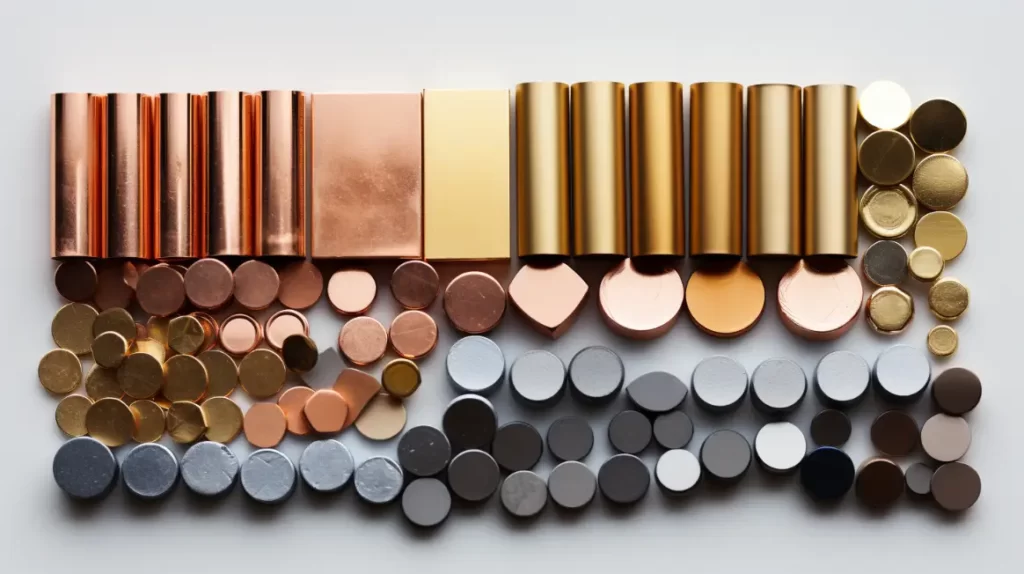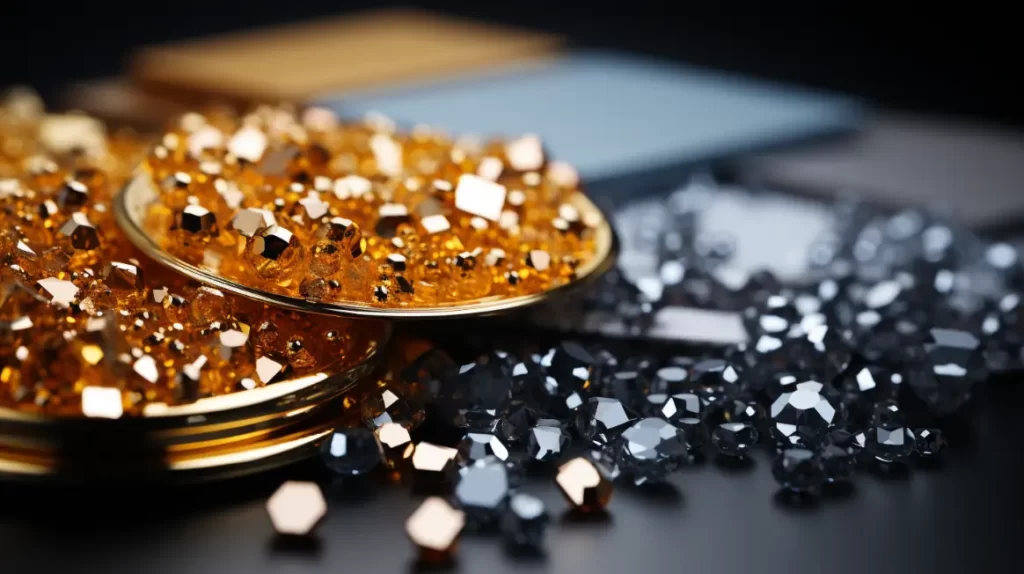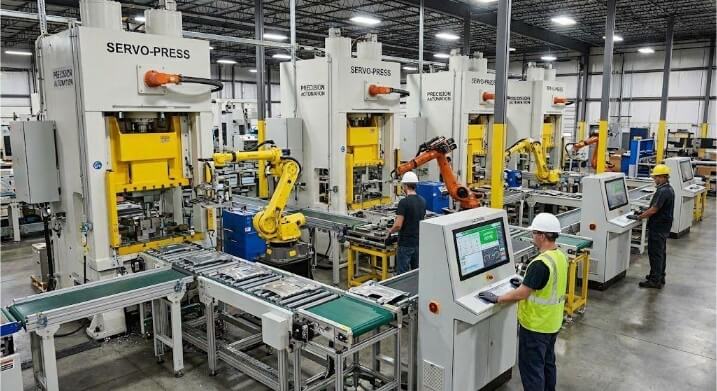You may have faced a situation where you must choose the best metal for a particular application. Without clear information, you might waste resources on metals that don’t perform as needed, hurting your project’s success. That’s where a metal strength chart helps. It breaks down the mechanical properties of each metal so that you can select the best fit for your project’s needs.
The metal strength chart helps match material strength to the task. It shows values like tensile strength, yield strength, and hardness. These numbers help you pick a metal to handle your loads, heat, or wear. Use this chart when comparing options during product design or sourcing. It saves time and cuts mistakes.
Choosing metal doesn’t have to be a guessing game. See how each type stacks up and makes smarter choices based on real numbers. In this article, you’ll find practical guidelines and clear examples of easily selecting the right metal.

What is Meant by “Metal Strength”?
Metal strength is the metal’s ability to resist force. It shows the pressure the metal can take before it changes shape or fails. There are several types of strength, each tested in different ways.
Tensile strength measures how much pulling force a metal can take before breaking. Yield strength tells when the metal begins to bend without returning to shape. Compressive strength shows how well it resists squashing. Shear strength deals with forces that try to cut or slide parts of the metal past each other.
These numbers come from lab tests. They help engineers and buyers decide whether a metal is strong enough.
Understanding the Types of Strength in Metals
Metals face different forces during use. Each type of strength measures how a metal reacts to one of these forces. Knowing the differences helps you pick the right one for your part.
Tensile Strength Explained
Tensile strength shows how much pulling force a metal can take before it breaks. These parts stretch under tension.
If the metal has low tensile strength, it may snap. High tensile strength means it can handle more pulling before failure. It’s measured by pulling a metal sample until it breaks, then recording the maximum force it withstood.
Yield Strength and its Importance
Yield strength is when a metal starts to bend or stretch permanently. It doesn’t snap but won’t return to its original shape.
If the yield strength is too low, the part may bend and stay bent. That isn’t good for tight fits or load-bearing parts.
Compressive Strength
Compressive strength shows how well a metal can resist forces that push or squeeze it. Think of it as the opposite of tensile strength.
If the metal is weak in compression, it can deform or crush. Strong compressive strength prevents dents, buckling, or collapse under pressure.
Shear Strength
Shear strength tells how much force a metal can take when parts slide across each other. It’s different from pulling or pushing straight on.
If shear strength is too low, the fastener may snap where the force cuts across it. Use metals with high shear strength in joints, connectors, or moving parts.
Impact Toughness
Impact toughness shows how well a metal can absorb sudden shocks or hits. It’s not about steady force—it’s about quick blows.
A brittle metal may crack under shock, while a tougher one absorbs the energy and stays intact. Impact tests help compare different metals for these uses.
Fatigue Resistance
Fatigue resistance shows how often a metal can handle repeated loads before cracking. Many parts don’t fail from one big hit. They fail from small forces over and over again.
If the metal has poor fatigue strength, tiny cracks grow and cause failure. Use metals with high fatigue limits in these cases.
Hardness and Wear Resistance
Hardness is how well a metal resists scratching, denting, or surface damage. Wear resistance is how long it holds up when rubbed or scraped.
Hard metals last longer in rough use. If the metal is too soft, the surface wears out fast. Surface coatings or heat treatment can also improve wear life.

Metal Strength Chart Overview
A metal strength chart puts key data side by side. It helps you compare metals quickly. You can match the right strength type with the job’s needs.
How to Read a Metal Strength Chart?
Each row in the chart lists a metal or alloy. Columns show different strength values like tensile strength, yield strength, hardness, or impact resistance.
Look at the numbers in each column to compare how metals perform under different types of force. Higher values mean better resistance. Pay attention to the property you need most—tensile, yield, or another—based on your part’s function.
Standardized Units and Testing Methods
Strength is measured using standard units. Tensile and yield strength are measured in megapascals (MPa) or pounds per square inch (psi). Hardness can be shown on the Brinell (HB), Rockwell (HR), or Vickers (HV) scales.
Testing follows set methods, like ASTM or ISO standards. This keeps results consistent across labs and suppliers. Always check if the values came from reliable tests.
Comparing Strength Across Different Metal Types
Different metals have different strengths by nature. For example:
- Steel often has high tensile and yield strength.
- Aluminum is lighter and less intense but easier to shape.
- Titanium offers strength close to steel but is much lighter and resists corrosion better.
- Copper and brass are lower in strength but provide excellent conductivity.
Use the chart to compare these strengths and find what fits your job best.
| Types of Metals | Tensile Strength (PSI) | Yield strength (PSI) | Hardness Rockwell (B-Scale) | Density (Kg/m3) |
|---|---|---|---|---|
| Stainless steel 304 | 90,000 | 40,000 | 88 | 8000 |
| Aluminum 6061-T6 | 45,000 | 40,000 | 60 | 2720 |
| Aluminum 5052-H32 | 33,000 | 28,000 | 2680 | |
| Aluminum 3003 | 22,000 | 21,000 | 20 to 25 | 2730 |
| Steel A36 | 58-80,000 | 36,000 | 7800 | |
| Steel Grade 50 | 65,000 | 50,000 | 7800 | |
| Yellow Brass | 40,000 | 55 | 8470 | |
| Red Brass | 49,000 | 65 | 8746 | |
| Copper | 28,000 | 10 | 8940 | |
| Phosphor Bronze | 55,000 | 78 | 8900 | |
| Aluminum Bronze | 27,000 | 77 | 7700-8700 | |
| Titanium | 63,000 | 37,000 | 80 | 4500 |
Strength Characteristics of Common Metals
Each metal has strengths that make it better for specific jobs. This section explains what to expect from popular metal types and where they perform best.
Carbon Steel
Carbon steel is strong, cheap, and easy to weld. It has high tensile and yield strength. That makes it great for structural parts, brackets, and frames. But it can rust if left uncoated. For indoor or coated parts, it works well and keeps costs down.
Stainless Steel
Stainless steel resists rust and holds up in harsh environments. It has good tensile and yield strength, especially in 300 and 400-series grades. It’s excellent for food equipment, enclosures, and outdoor use. It’s more expensive than carbon steel but lasts longer.
Aluminum
Aluminum is much lighter than steel but still strong enough for many jobs. It has lower tensile and yield strength but resists corrosion and is easy to shape. It’s a top choice for parts that need to stay light—like enclosures, panels, and aerospace parts.
Titanium
Titanium offers strength close to steel but weighs much less. It also resists corrosion very well. It’s used in aerospace, medical, and high-performance parts. It costs more and is harder to machine, but titanium is a wise choice when weight and strength matter.
Copper and Brass
Copper is soft but conducts electricity and heat better than most metals. Brass adds strength and better wear resistance. These metals don’t offer high tensile strength but shine in electrical parts, decorative pieces, and low-load components.
Magnesium Alloys
Magnesium alloys are even lighter than aluminum. They have moderate strength and are used in automotive and aerospace parts where every gram counts. They can corrode more easily and are harder to find, so they’re used primarily on niche applications.
Nickel Alloys
Nickel alloys keep their strength even at high heat. They’re used in jet engines, turbines, and chemical plants. These metals resist corrosion, wear, and heat damage. They’re costly but work well when heat and pressure are extreme.
Application-Based Selection of Metal Strength
The right metal depends on where and how it’s used. Some parts need high strength. Others need corrosion resistance, low weight, or special properties like conductivity.
Choosing Metals for Structural Frameworks
For load-bearing frames, strength and durability come first. Carbon steel is widely used because it’s strong and affordable. It handles stress well and can be welded easily.
It supports weight and resists bending or cracking in buildings, machines, and industrial equipment. Stainless steel is used if corrosion is a concern, like in damp or outdoor conditions.
Metals for Automotive Components
Cars use a mix of metals to balance weight, safety, and cost. High-strength steel is standard for body frames and crash zones. It’s tough and keeps shape in accidents.
Aluminum reduces weight in engine parts, wheels, and panels. Some sports or electric cars use magnesium or titanium parts to save more weight without losing strength.
Aerospace Applications and Strength-to-Weight Priorities
Planes and spacecraft need parts that are both strong and light. Titanium is often used in jet engines and structural parts. It resists heat and stress while staying lightweight.
Aluminum alloys are used for fuselages and panels. They offer an excellent strength-to-weight ratio and are easy to machine. Every part must meet strict standards to ensure safety and fuel efficiency.
Medical Devices and Bio-Compatibility Considerations
Medical parts must be strong, corrosion-resistant, and safe for the human body. Stainless steel and titanium are top choices.
Titanium is used in implants because it doesn’t react with tissue. Stainless steel is used in surgical tools and supports. Metals here need smooth finishes and must hold up under sterilization.
Electronics Enclosures and Conductivity Factors
For electrical parts, conductivity matters. Copper is used in wires and contacts because it carries current well.
Aluminum and brass are used in housings for strength and shielding. They also protect against interference. Stainless steel is used when toughness or corrosion resistance is needed for extended use.
Marine and Offshore Uses: Strength vs. Corrosion
Saltwater eats away at most metals, so corrosion resistance is key. Stainless steel and some aluminum or copper alloys are often used.
These metals resist rust while holding up under load. Marine parts like frames, housings, or fasteners must survive force and constant moisture. Nickel alloys are used in deep-sea or high-pressure setups.

Factors Beyond Metal Strength
Strength matters, but it’s not the only thing to think about. Other practical factors also shape your final material choice.
The Role of Cost in Material Choice
A strong metal isn’t always the right choice if it blows the budget. Carbon steel offers solid strength at a low cost, which is why it’s so common. Titanium has excellent properties but costs much more. Always weigh strength against cost to stay within budget, especially for high-volume production.
Machinability and Weldability
Some metals are harder to cut, drill, or weld than others. Aluminum and mild steel are easy to machine and weld. Stainless steel takes more effort. Titanium is tough to work with and needs special tools. Poor machinability raises lead times and labor costs, so check this early in your selection process.
Availability and Supply Chain Considerations
Even the best metal won’t help if you can’t get it in time. Always check if the metal you want is easy to source. Common metals like steel and aluminum are widely stocked. Specialty alloys may have long lead times or limited suppliers. Choose materials that fit your production schedule.
Surface Treatment Compatibility
Surface treatments like powder coating, anodizing, or plating can add protection or improve looks. However, not all metals take these treatments well. Aluminum anodizes well, while stainless steel usually doesn’t need coatings. Ensure your metal choice works with your planned finish to avoid issues later.
How to Use Metal Strength Charts for Project Planning?
A metal strength chart gives you the numbers, but using them correctly takes more than just reading. Planning well means matching real-world needs with wise choices.
Matching Design Load Requirements
Start by knowing the forces your part will face—pulling, pushing, bending, or impact. Then, check the strength values on the chart to find metals that can handle those loads.
Look at tensile strength for tension parts, yield strength for load frames, and shear strength for fasteners. Always choose a metal that exceeds the load your design will carry.
Accounting for Safety Margins
Don’t choose a metal that matches the load exactly. Always include a safety margin for unexpected stress, wear, or material flaws.
A common rule is to select a material with 1.5 to 2 times the required strength. This helps prevent failure over time and gives you peace of mind.
Mistakes to Avoid When Choosing Based on Strength Alone
Don’t pick a metal just because it’s strong. Some strong metals are hard to weld, cut, or shape. Others may corrode or cost too much.
Always balance strength with weight, price, and the metal’s behavior during production. Choosing the “strongest” metal can backfire if it slows down your build or adds hidden costs.
Conclusion
A metal strength chart is a practical tool that helps you compare materials by strength. To choose the right metal, match the required strength to the type of force—tensile, yield, shear, or impact. Also, think about weight, cost, machinability, and corrosion resistance.
Need help picking the right metal for your next project? Contact us with your drawings or specifications, and we’ll recommend the best material based on strength, cost, and use.
Hey, I'm Kevin Lee

For the past 10 years, I’ve been immersed in various forms of sheet metal fabrication, sharing cool insights here from my experiences across diverse workshops.
Get in touch

Kevin Lee
I have over ten years of professional experience in sheet metal fabrication, specializing in laser cutting, bending, welding, and surface treatment techniques. As the Technical Director at Shengen, I am committed to solving complex manufacturing challenges and driving innovation and quality in each project.




